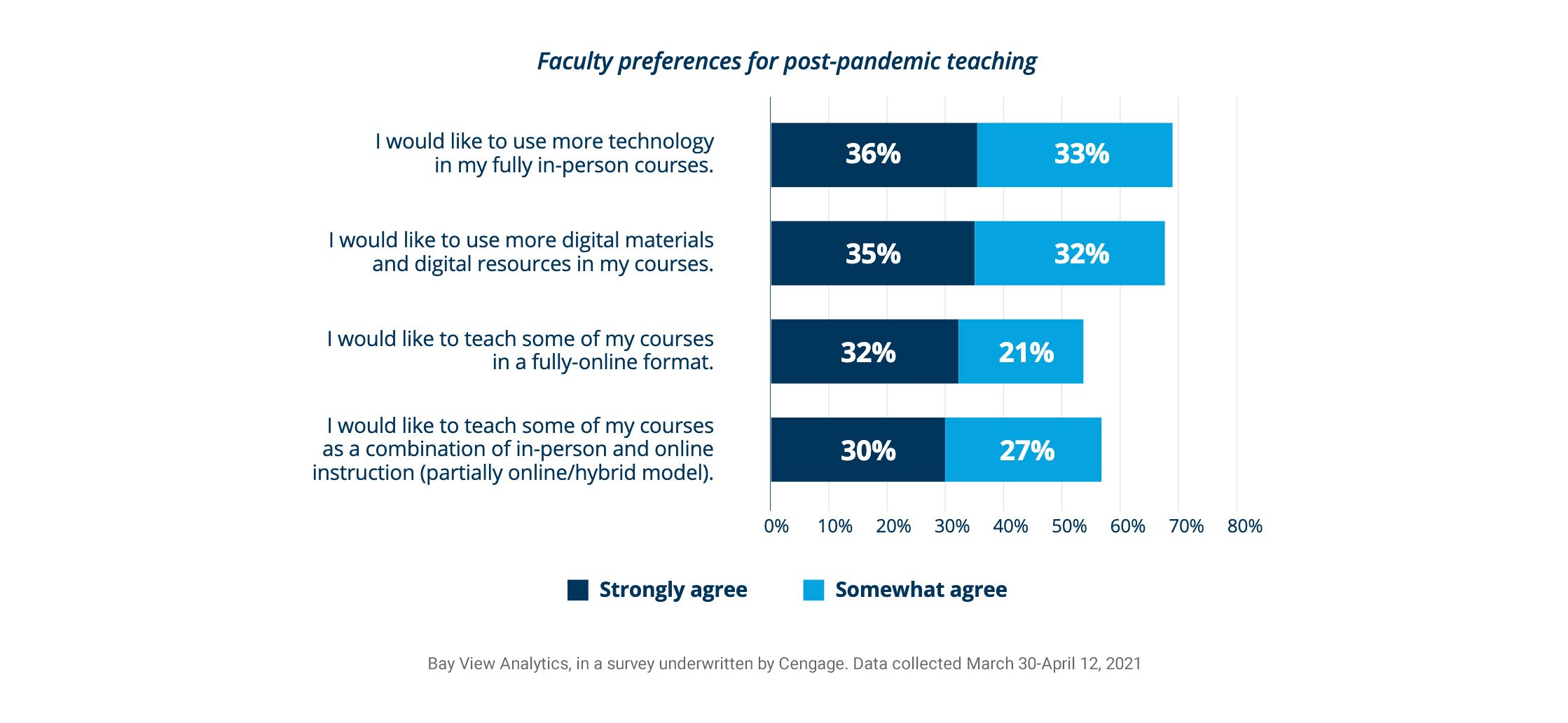The
Post-Pandemic College
3 New Institutional Strategies to Further the Digital Transformation on Your Campus

The disruption to higher education caused by the coronavirus pandemic was massive and on a scale seen only a few times throughout history, during world wars and economic recessions. It wreaked havoc on teaching and learning, student mental health, and institutional budgets. But if there is a silver lining to the experience it is this: Faculty attitudes toward teaching online have become much more positive during the pandemic, and in fact, are now largely aligned with what students increasingly want—more digital resources.

This shift in mindset doesn’t portend a sudden disappearance of face-to-face classes and residential education. But it does ease the way for models that had operated at the margins of higher education before the pandemic to move mainstream in the coming years. “There weren’t always a lot of incentives for faculty to be creative and innovative in how they approached teaching,” said Jamienne Studley, president of the Western Association of Schools and Colleges, an accrediting agency. The remote education experience during COVID-19 lasted longer than anyone expected, she added, breaking old habits.
“The pandemic gave faculty permission to try new things. Many liked what they found.”
Jamienne Studley, president of the Western Association of Schools and Colleges
To further the digital transformation of their campuses in the coming decade—and better serve the needs of students—below are three strategies administrators can employ:
1Colleges shouldn’t see course delivery as a binary choice between online and face-to-face, but rather as a mix of the two.
Prior to the pandemic, hybrid learning was increasingly popular among students and a successful model pedagogically. About one-third of college students took at least one online course in the fall of 2018, according to the latest figures available from the U.S. Department of Education, and studies showed that students taking online or hybrid courses generally performed about as well as students in identical traditional, face- to-face courses.
While students mixing and matching online and face-to-face courses might become more of the norm after the pandemic, what is more likely based on surveys of students, faculty, and administrators, is the adoption of tech-enabled courses. In this scenario, faculty mix online components (recording the lecture, for instance) with face-to-face components that encourage active and peer learning in a physical classroom setting.
2Digital education is not just the mode of the delivery, but also the platform and tools.
Flexible approaches to teaching and learning have largely focused on course delivery. But faculty and students also valued flexibility in other ways, including access to digital course materials and different ways to assess students beyond traditional grading and high-stakes tests.
As a result, faculty are more likely to incorporate video and digital materials —for both in-person and remote learning—after the pandemic.
3 Digital tools—when used in the right ways—can provide equitable access to the growing diversity of students with different learning styles.
Before the pandemic, there was a growing divide on campuses between faculty—two-thirds of whom are white in the U.S.—and a student body increasingly made up of students of color, first-generation students, and low-income students.
Research has found that students with professors who understand their lived experiences are more likely to stay in college and graduate and perform better in class. As professors “zoomed” into the lives of their students during COVID-19, they saw those lived experiences—usually for the first time. Such learning environments “can level the playing field by creating spaces where students feel a sense of belonging and feel they can speak up,” said Jessica Rowland Williams, director of Every Learner Everywhere, a network of college and technology groups focused on using digital learning to drive equitable access and success in higher education.
This was an excerpt from Jeff Selingo’s, The Post-Pandemic College: How to Sustain Digital Learning and Innovation to Improve the Student Experience. Download and read the full white paper here.

This content sponsored and provided by Cengage. The editorial staff of Inside Higher Ed had no role in its preparation.

